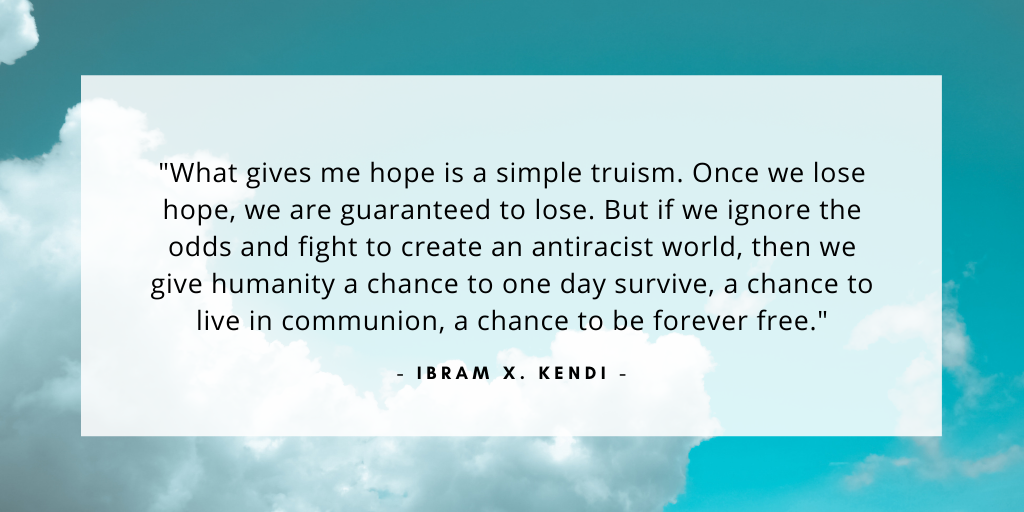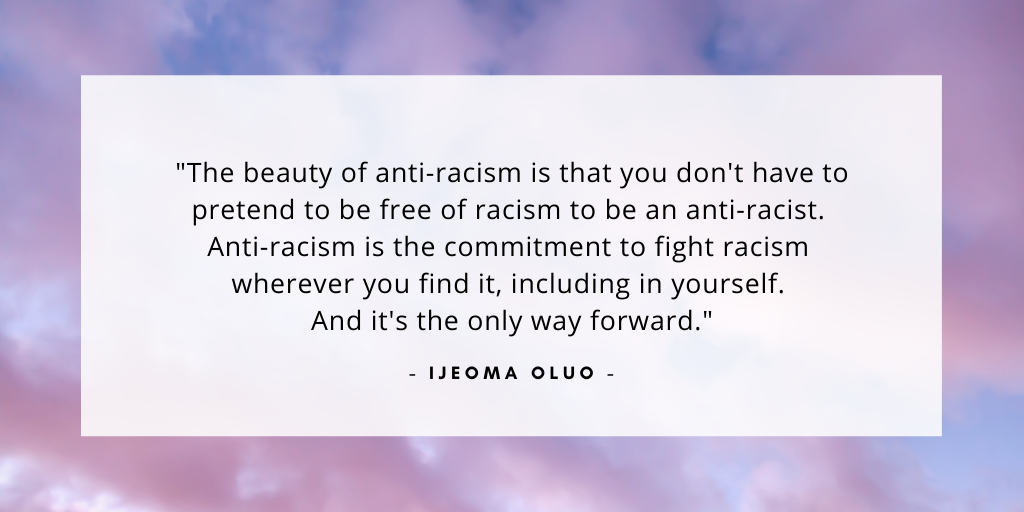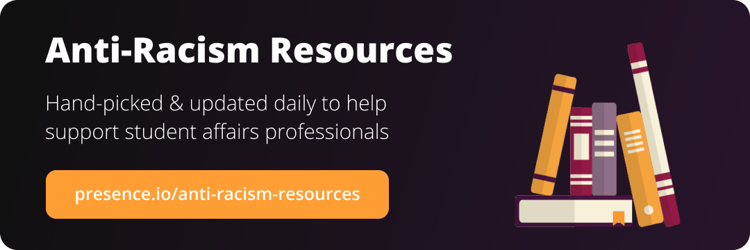‘Tis the season for orientation and first-year experience planning!
The common goal of any FYE program is to advance and support efforts for a student’s successful transition into (and through) higher education, ultimately improving student success. Best practices tell us that if we’re doing it right, our FYE programming, support, and messaging should be consistent for all first-year students.
If you’ve got the consistent messaging part down, I’d like to challenge you to take that messaging to the next level. When you reflect on your ability as an FYE professional to reach every first-year student with the same messages, experiences, and opportunities for support, you’ll realize that you actually hold one of the most powerful tools for enacting change on campus. So this year, as you plan initiatives and events for your new incoming students, you are not just a FYE staff member; you are a campus change agent!
It has become common for orientation programs to start us off with a session or two about diversity and inclusion — introducing new students to the bare minimum expectations for being welcoming of every peer. Well, here’s my message to new and seasoned FYE professionals: This is not good enough anymore… and honestly, it never was.
I want to challenge you to put your anti-racist views into action. What if we were bold enough to dive deeper with first-year students? What if we challenged brand-new college students and believed in them enough to move them from a basic understanding of race to anti-racist thinking and actions from the get-go?

You probably already agree that higher education institutions must be anti-racist in order to better serve the entire student body, and, furthermore, that this work can and should start during a student’s first-year on campus. But, how do we make this happen, especially in spaces that have historically been predominantly white and/or still are?
Well, this work can start with SApros driving anti-racist programming and conversations as soon as first-year students set foot on campus. Here are some ideas of how you might make this work for your institution.
4 Strategies
1. Use peer mentors as change agents
Peer mentorship is an effective mechanism for helping first-year students transition to college. Students who have been part of the campus community for a while can help new students manage the demands of their first year by normalizing the college experience, linking students to campus resources, and helping students feel fully part of the community. So, what better way to set expectations for an anti-racist campus community than having more experienced students demonstrate that?
In my work with FYE at the College of Saint Benedict and Saint John’s University, I’ve directed our Peer Mentor Program for the last four years and have seen first-hand what works well and what doesn’t.
My pro tip when getting started is to keep your structure and expectations simple. Hire peer mentors to be an essential FYE presence in your first-year seminar courses, again contributing to the consistent messaging of your FYE program. One peer mentor for every 20-25 students is ideal for fostering meaningful relationships. Expect peer mentors to work 3-5 hours weekly, being present in the classroom and available outside of it for individual meetings with mentees.
Through this relatively simple decision to hire peer mentors, you’ll increase the reach of your anti-racist messaging and added an anti-racist role model to each first-year student’s life.
Beyond the benefits of being a constant presence and role model, the real impact of the peer mentors comes from how you recruit and train them. Keep these tips in mind:
- Your peer mentors must be reflective of your student body, which can go beyond racial identity. Your new students should be seeing their own identities reflected in the Peer Mentor team. Hire students from the LGBTQIA+ community, students with disabilities, international students, first-generation students, and non-traditional students.
- To ensure you are effectively recruiting and attracting students of all identities to this leadership role, personally reach out to partners on campus — like multicultural centers, LGBTQIA+ Centers, accessibility services, and student organizations. Do not expect that your applicant pool will diversify itself; accurate representation will require work on your end.
- Your peer mentors must be trained on how to facilitate conversations on race, diversity, and inclusion. Just because a peer mentor says they’re anti-racist,they won’t necessarily be at the advanced level of facilitating a conversation about race on their own. Train your mentors on how to approach mentorship with cultural sensitivity and a lens of justice. The Social Justice Toolbox has some excellent activities to incorporate into your mentor training.
- And finally, practice makes perfect. Create opportunities for your peer mentors to gain confidence in facilitating race and DEIJ conversations. Have them plan activities for class or workshops for orientation. The more opportunities you provide for your peer mentors to lead these important conversations, the more invested they’ll become and, thus, increase their impact on first-year students.
2. Implement anti-racist lessons into your first-year seminar courses
The goal of all first-year seminar courses is to set students up for academic and personal success. I’d argue that the key to this success is having students understand personal biases and ways to create inclusive communities. That way, they can ultimately develop anti-racist mindsets.
My biggest piece of advice when building out your program is to make it digestible for first-year students. To do this, plan to scaffold lessons and activities that build upon one another over the course of an academic term. Consider starting by:
- Designing a lesson that incorporates tools like the Implicit Bias Test or Social Identity Wheel and concluding with group discussions and individual reflections.
- Discussing the power of storytelling, including how Black, indigenous American, Asian, and Latinx students and accomplices can use personal stories to create inclusive spaces and advocate for their peers with less privileged identities.
- Leading a critical thinking exercise that promotes understanding of microaggressions.
As you figure out what resonates best with the students and what plays to the strengths of peer mentors and course instructors, you can make these lessons a foundational part of your first-year seminar classes.

3. Build on your common reading program framework with anti-racist books
Implementing a common reading program is another excellent way to create a common experience for all first-year students. Effective programs integrate both curricular and co-curricular activities throughout students’ first-year, focused on the book and the issue it addresses, to ultimately create spaces for campus-wide dialogue.
Ding ding; We have another platform to discuss race and racism! Common reading programs can be high-impact and cost-effective to implement, especially if your campus is able to purchase books for students or provide open access to the e-book version. Here are some books that could bring an anti-racist focus to your common reading program:
- How to Be Antiracist – Ibram X. Kendi
- The Immortal Life of Henrietta Lacks -Rebecca Sloot
- When They Call You A Terrorist (Young Adult Edition) – Patrisse Cullors, asha banele
- The Dark Fantastic – Ebony Elizabeth Thomas
- This is What America Looks Like – Ilhan Omar
Selecting a book is just the start! Consider incorporating podcasts, documentaries, and activities to build on the anti-racist conversation with your new students.
4. Don’t forget about faculty and staff who serve your first-year students
There is no better way to derail great programming and messaging than not doing your due diligence in getting campus partners on board with your message and vision.
Any faculty or staff member who frequently interacts with first-year students should hear from you or other leaders of the FYE program. You need to broadcast that orientation and FYE are committed to fostering anti-racist first-year students.
When setting this expectation, provide some resources and professional development opportunities to help faculty and staff teach first-year classes or facilitate programs
- Brene Brown’s Daring Classrooms offer instructors a great foundation for creating classroom spaces that allow “students to breathe, be curious, and explore.” This type of environment is critical to establish for any open, honest conversation about racism and DEIJ.
- Partner with your campus’ Center for Teaching and Learning or approach faculty leadership to identify affordable and accessible training opportunities focused on anti-racist pedagogy and dismantling white supremacy that could be adapted to first-year classrooms. The training of faculty and staff instructors should not all fall to you, but you may need to be the person to first identify the need for opportunities like this and advocate for their creation.
- And finally, your common reading program doesn’t need to end with the students! Consider facilitating an institution-wide common reading program, like this one at Cuyahoga Community College, using a book that addresses issues of racism or discrimination. Having all faculty and staff read the book and then participate in subsequent campus-wide events creates an accessible opportunity to grow as anti-racist higher ed professionals, while demonstrating to your students that this work matters to the entire campus community.
FYE programs, first-year courses, and orientation all provide excellent platforms for instilling positive changes at our institutions through brand-new students.

But while you may be excited to try incorporating as many anti-racist practices as possible right away, I encourage to first start with just one and do it well. When it comes to starting anti-racist work, we must prioritize quality over quantity. So, pick the idea that resonates best with your campus, and then dedicate the best people and resources to it. A significant investment of time, energy, and resources in just one of these ideas will ensure that you shift to an anti-racist FYE program that is serving all of your students well.
How have you helped your first-year students strive toward anti-racism? We’d love to hear your stories. Connect with us on Twitter @themoderncampus and @lindseyggutsch.
(And for tips on becoming a better anti-racist professional yourself, check out our earlier post.)





